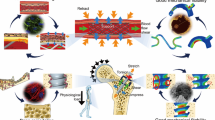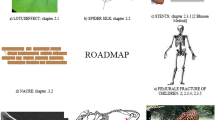Abstract
The value of Nitinol (Ni-Ti) in the field of medicine has proven to be far greater than just as the simple “springy metal” it was once considered to be. In particular, its use in vascular implants highlights many valuable yet subtle behaviors, including a “biased stiffness,” enhanced fatigue resistance, low magnetic susceptibility, and good biocompatibility. Nitinol today is nearly as well known to medical-device designers and physicians as are stainless steel and titanium, and it is the enabling ingredient in a growing number of successful and profitable life-saving devices.
Similar content being viewed by others
References
J.L. Hughes, Evaluation of Nitinol for Use as a Material in the Construction of Orthopaedic Implants, Final Report, December 1973-December 1976 (Johns Hopkins University, School of Medicine, Baltimore, 1976).
L.S. Castleman, S.M. Motzkin, F.P. Alicandri, and V.L. Bonawit, J. Biomed. Mater. Res. 10 (1976) p. 695.
M.J. Nonnenmann, “A Comparison of Stiffness, Flexure Yield Strength, and Working Range of AMES Heat #1 Nitinol Wire under the Conditions of Heating the Wire from 400°C−800°C at 50° Increments Utilizing…,” Master’s thesis, University of Iowa, 1975.
H. Sakamoto, K. Uematsu, M. Momota, S. Tanabe, T. Suzuki, and T. Endo, U.S. Patent No. 4,925,445 (1990).
J.K. Nicholson and R.F. Gatturna, U.S. Patent No. 4,616,656 (1986).
C.T. Dotter, R.W. Buschmann, M.K. McKinney and J. Rosch, Radiology 147 (1983) p. 259.
T.W. Duerig, D.E. Tolomeo, and M. WholeyMin. Invas. Ther. Allied Technol. 9 (3/4) (2000) p. 235.
B. Berg, Mater. Sci. Eng., A 273-275 (1999).
M. Simon, R. Kaplow, E. Salzman, and D. Freiman, Radiology 125 (1) (1977) p. 89.
C.-M. Chan, S. Trigwell, and T. Duerig, Surf. Interface Anal. 15 (1990) p. 349.
A. Pelton, D. Hodgson, S. Russell, and T. Duerig, in Proc. SMST-97 (Shape Memory and Superelastic Technologies) (The International Organization on Shape Memory and Superelastic Technologies, Santa Clara, CA, 1997) p. 407.
Rights and permissions
About this article
Cite this article
Duerig, T.W. The Use of Superelasticity in Modern Medicine. MRS Bulletin 27, 101–104 (2002). https://doi.org/10.1557/mrs2002.44
Published:
Issue Date:
DOI: https://doi.org/10.1557/mrs2002.44




